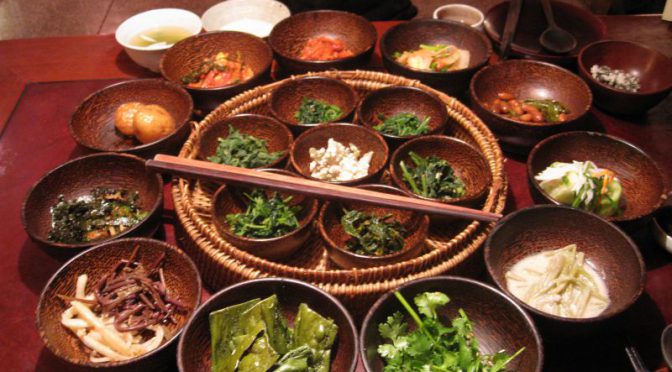For those of us who take great joy in trying out new things, visiting a restaurant to sample dishes from a foreign cuisine is something of a ritual. Any foodie knows that a dish is not just ingredients cooked together; it’s a window to another civilization. If you’re thinking about visiting a Korean restaurant but worry you won’t know what to get, we’re here to help.
Don’t Be Intimidated By The Menu In A Korean Restaurant
Reading the menu in a foreign cuisine’s restaurant can be a nightmare. From the unknown ingredients to the traditional (also unknown) ways of cooking, you fear you’ll end up ordering something you hate. Luckily, when it comes to Korean food, this is your guide.
We are going to start with Korea’s national dish: the Kimchi, which is basically spicy, fermented cabbage. You can either eat it as a dish of its own or you may find it as an ingredient in pretty much everything. Kimchi has a strong odor, but the taste is quite sweet and spicy – it can go from mild to very spicy indeed. It’s also quite garlicky, so if garlic and spices are not for you, maybe go easy on the kimchi. It’s a very healthy food, and even if you try a tiny bit, it’s an absolute must if you’re trying Korean cuisine.
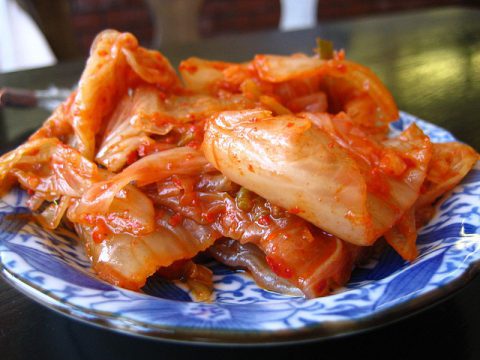
Korean classic Bibimbap means ‘mixed rice’. It is usually served in a hot bowl (‘dolsot’) with meat (usually beef) and a mix of vegetables. Traditionally, there is a whole raw egg yolk on top, but don’t worry – it is slowly cooked with the heat of the dish as you stir everything together.
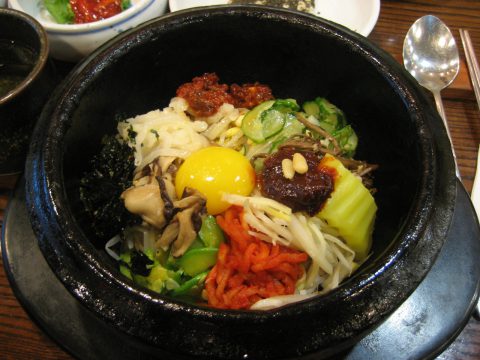
Koreans are also big on barbecue, so there are quite a few choices there. You can order Jaeyook gui (marinated sweet and spicy pork) or Bulgogi (beef). You will most probably find Kalbi (beef short ribs) in every menu too, but they can be quite pricey, so be prepared for that. When your meat has been grilled, you wrap it in lettuce leaves that bring out its flavor amazingly.
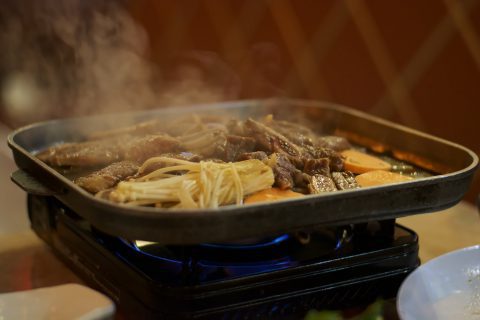
If you like soups, you will find a large variety of those in a Korean restaurant. You can order ‘soondooboo jjigae’ which is made with wonderful ‘soondooboo’ (soft tofu), whole prawns, clams, green onions and a raw egg cracked over the top (a bit of a theme there). It’s usually served with a small portion of rice. The ideal way to eat this is by dipping spoons with rice in the soup little by little. Expect the dish to be quite spicy, but it’s worth getting used to some heat – it’s delicious and heart-warming.
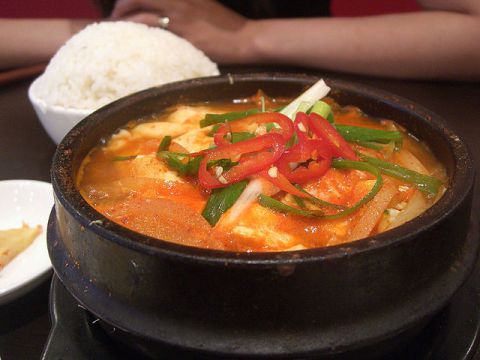
Useful Korean Restaurant Vocabulary
Now, let’s get you familiarized with some of the general terms you’ll see in a Korean restaurant menu.
Twigim means ‘fried’, so wherever you see this, expected your dish to be prepared in a frying pan.
Jeon describes a group of Korean foods that are similar to pancakes. Pajeon is the most common among them, and it’s topped with spring onions.
Guk just means ‘soup’, so anything containing the word on the title means it’s a soup you’re getting.
Jjigae means ‘stew’, so look out for it is you are a fan of stews.
Banchan are side-dishes. They contain a mix of kimchis, seaweeds, and other small plates. Expect them to come with your order, and when they are over, restaurants usually refill them.
These are the dishes to order in a Korean restaurant when you visit for the first time – and, like all introductions, they will just give you a small taste of what Korean cuisine is all about. As you get more comfortable with the tastes and style of Korean cuisine, however, you can (and should) be more adventurous and try out new things.
Did you enjoy reading this? Read more about Asian culture here. If you feel like discussing Korean cuisine with a local lady, why not visit AsianDate? You can also find us on Instagram and Pinterest.
